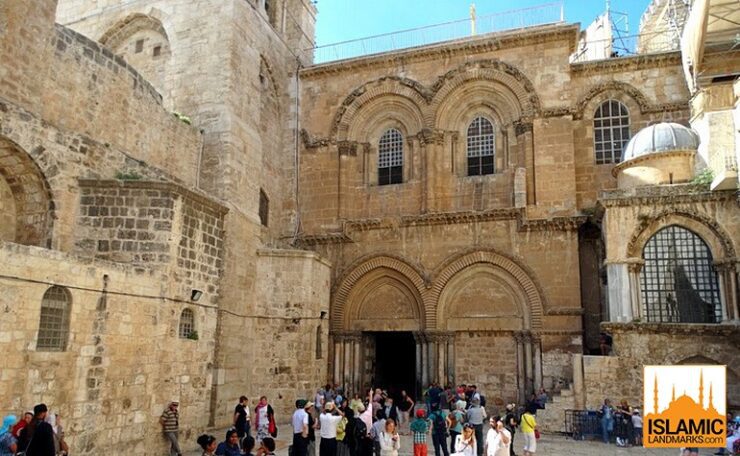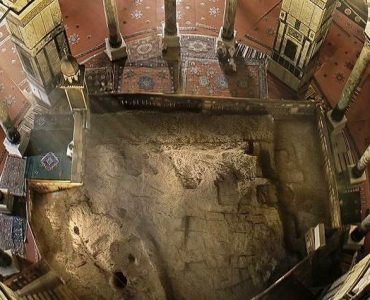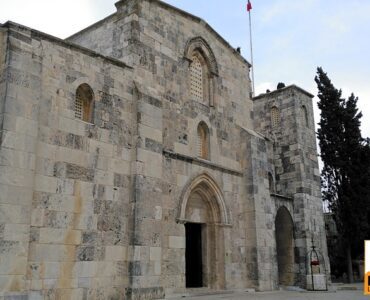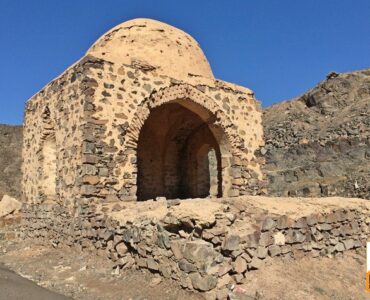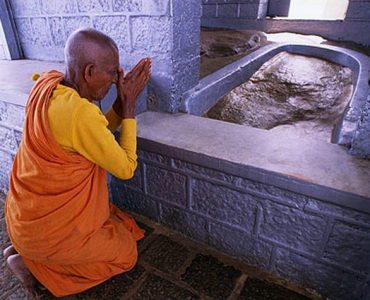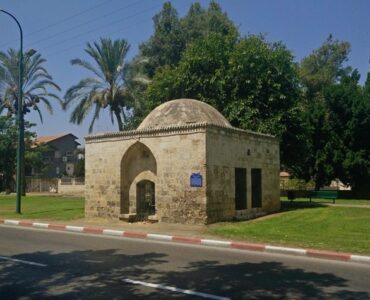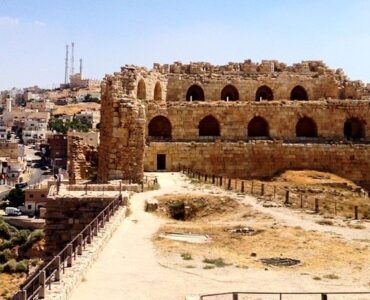This is the holiest place for Christians in Jerusalem as it is where they believe Isa (عليه السلام) [Jesus] was crucified. This concept is rejected by Muslims who believe Isa (عليه السلام) did not die but was taken up to the heavens by Allah (ﷻ) and will return towards the end of time.
- Allah (ﷻ) tells us in the Quran in Surah Nisa: “That they said (in boast), ‘We killed Isa, son of Mary, The Messenger of Allah.; But they killed him not, nor crucified him. Only a likeness of that was shown to them. And those who differ therein are full of doubts, with no knowledge, but only conjecture to follow, for a surety they killed him not. Nay, Allah raised him unto Himself, and Allah is Exalted in Power, Wise.” [4:157-158]
- Muslims peacefully took control over the city of Jerusalem from the Byzantines in February 638 CE. Caliph Umar (رضي الله عنه) accepted the city’s surrender from Sophronius, the Patriarch of Jerusalem. He was shown around the church during which the time for salah occurred. The Patriarch offered a place for him to pray in the church and laid out a straw mat but Umar (رضي الله عنه) refused, explaining to the Patriarch, “Had I prayed inside the church, the Muslims coming after me would take possession of it, saying that I had prayed in it.” Tradition has it that he picked up a stone, threw it outside and prayed at the spot it landed. The present Mosque of Umar was built over this place by Salahuddin Ayyubi’s son Afdhal Ali in 1193 CE.
- The earliest known Christian church on this site dates from before 66 CE, but the area was levelled by the Roman Emperor Hadrian, who then raised a temple to Aphrodite here in 135 CE, following the Second Jewish Revolt. After his conversion to Christianity, the Emperor Constantine dispatched his mother Helena to the Holy Land in 326 CE to establish the true locations of Christian holy sites. Since it was standard practice to build temples on sites held sacred to other religions, especially subversive ones, Hadrian’s construction of the temple to Aphrodite here led Helena to identify the site as the location of the supposed crucifixion and burial.
- The church is built on Golgotha, the Hill of Cavalry where the crucifixion was to be carried out. In the time of Isa (عليه السلام) this site was actually outside Jerusalem’s walls.
- Over the centuries the church has been destroyed several times and its present day appearance has been attributed to Emperor Monomac and twelfth century Crusaders.
- The Church of the Holy Sepulchre has long been the subject of interdenominational disputes. Six Christian denominations – the Latins (Roman Catholics), Greek Orthodox, Armenian Orthodox, Syrian Orthodox (Jacobites), Ethiopians and Copts own different parts of the church and there are regular, and sometimes violent skirmishes as each vies to maintain their territory. Repairs are especially problematic; the restoration work following the 1927 earthquake wasn’t completed until 1988, after thirty years of arguments and a further thirty years of construction. 11 people were hospitalised in 2002 when a fire broke out after the Coptic monk who is stationed on the roof of the church to symbolize Coptic claims to the site moved his chair from its agreed spot into the shade, which was interpreted as a hostile act. Two years later another altercation occurred when a Franciscan chapel door was left open, which was interpreted as a sign of disrespect by Orthodox Christian worshippers.
- None of the denominations own the main entrance. In 1192, Salahuddin Ayyubi assigned responsibility for it to two neighbouring Muslim families. The Joudeh were entrusted with the key, and the Nusseibeh, who had been the custodians of the church since the days of Caliph Umar (رضي الله عنه) retained the position of opening the door. This arrangement has persisted into modern times as no Christian sect will trust the others with the key. Every morning and evening two armed Israeli soldiers accompany a member of the Joudeh family, who brings the door’s great key to a member of the Nusseibeh family, who unlocks or locks the door. The video below shows the church being locked.
References: Wikipedia, Palestine: Beginner’s guide – Ismail Adam Patel, The Rough Guide to Jerusalem, Sacred Places – Philip Carr-Gomm, HUMA Travel guide to Palestine.

